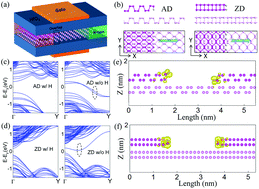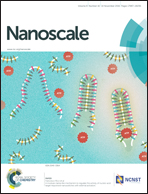Impact of edge states on device performance of phosphorene heterojunction tunneling field effect transistors
Abstract
Black phosphorus (BP) tunneling field effect transistors (TFETs) using heterojunctions (Hes) are investigated by atomistic quantum transport simulations. It is observed that edge states have a great impact on the transport characteristics of BP He-TFETs, which results in the potential pinning effect and deterioration of gate control. However, the on-state current can be effectively enhanced by using hydrogen to saturate the edge dangling bonds in BP He-TFETs, by which means edge states are quenched. By extending layered BP with a smaller band gap to the channel region and modulating the BP thickness, the device performance of BP He-TFETs can be further optimized and can fulfil the requirements of the international technology road-map for semiconductors (ITRS) 2013 for low power applications. In 15 nm 3L–1L and 4L–1L BP He-TFETs along the armchair direction the on-state currents are over two times larger than the current required by ITRS 2013 and can reach above 103 μA μm−1 with the fixed off-state current of 10 pA μm−1. It is also found that the ambipolar effect can be effectively suppressed in BP He-TFETs.


 Please wait while we load your content...
Please wait while we load your content...